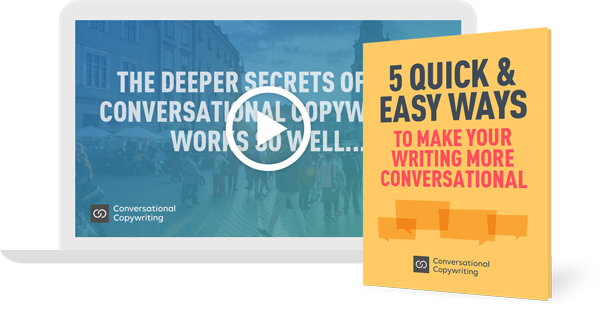
For decades we’ve used military jargon as part and parcel of how we talk about our craft as copywriters.
Consider some of the language we use with our colleagues and clients.
Target audience. Overcoming resistance. Finding the right triggers. Killing the competition. Guerilla marketing.
Language matters. It makes a difference to how we think about our work. It makes a difference to how we think about the consumers we “target” with our writing.
There’s a them and us mentality. It’s still there. Copywriters on one side and consumers on the other.
Our job was and is to overcome resistance in any way we can, and then get people to open their wallets and buy our stuff.
Use every trick in the book. Doesn’t matter. Whatever it takes to close the sale.
This is the adversarial approach to copywriting. It has worked just fine for decades. And for some audiences it can still work pretty well today.
But the adversarial approach is native to old-school, one-way, broadcast media. Media like TV, print, radio and direct mail. It works at it best when your audience can’t talk back. You use this approach when you’re writing AT an audience of passive readers, viewers or listeners.
Today those old-school media are losing ground to online, digital media. In fact, they have already lost.
Unplugged and looking for engagement…
Millennials and Gen Z are unplugging from cable TV. Now they’re getting their news and entertainment from online media, mostly through their mobile devices.
Basically, pretty much everyone under the age of about 35 is part of the millennial and younger generations. And that group is now bigger than the Boomer generation. (We’re dying off. Slowly but surely.)
Hundreds of millions of consumers around the world are not part of the generation that used to consider it OK to be interrupted by ads when listening to their radio in the car, or tolerate endless commercial breaks when watching TV at home.
They didn’t grow up thinking it was somehow acceptable or normal for companies to shout at them, push them and try to bully or trick them into buying stuff.
They’re not buying that approach.
What does work for these younger consumers is driven by the differences in the media platforms they use.
Unlike traditional broadcast media platform, online platforms are not one way. They are two-way or multi-way. For the first time, consumers can talk back. They can respond to company ads and commercials. They can push back when they don’t like how they’re being advertised “at”.
In fact, the combined voices of consumers online can now happily drown out the combined voices of the companies which are trying to sell to them.
The answer? Authentic engagement…
People no longer want to be sold at. They want companies to hear them. To listen. To enter into conversations with them. To engage with them in ways that are authentic, transparent and true.
Big brands and even mid-sized companies find this hard. Buried under layers of lawyers and old-school marketing habits, they find it difficult to find a voice that even begins to feel real.
You can see this across many big company social media channels. They feel comfortable broadcasting promotional messages through social media, but find it harder to engage one-on-one with their follows. They struggle to find a human voice.
This is one of the reasons we have seen an explosion in the number of paid influencers on YouTube, Instagram and other social media channels.
Knowing their corporate voices are no longer trusted, companies find YouTubers and other online influencers to disseminate their messages in a more authentic, human way.
The same challenge has driven the grown in the number of companies signing up brand ambassadors. These ambassadors speak on behalf of the company. Again, they give companies a natural, human, one-on-one voice.
But business can’t simply outsource its voice indefinitely. Companies need to find an authentic, conversational voice of their own.
This is why conversational copywriting is the future of selling online.
Step one for companies is to find their voice. A conversational, human voice they can use across all digital media.
That voice will be heard through the content they create, but also through their advertising.
This means, as copywriters, we’re on the brink of a huge opportunity.
We’re at the border between old-school, broadcast advertising and a new approach that is all about engagement and conversation.
We can step in and help our clients find their conversational voice.
We can help them connect with their audiences in ways that lead to deeper engagement, increased loyalty and a much higher lifetime value.
Old-school, broadcast copywriting is fine for old-school, broadcast media.
Online, digital media call for something else.
And that something is conversational copywriting.
Conversational Copywriting is the future of selling online. You can build your expertise now, or try catching up later. Find out about the course here…

Excellent piece, Nick.
This captures well how meaningful dialogue works with the emerging generation.
The youngest millennial consumer is a senior in high school. They have jobs and money to spend.